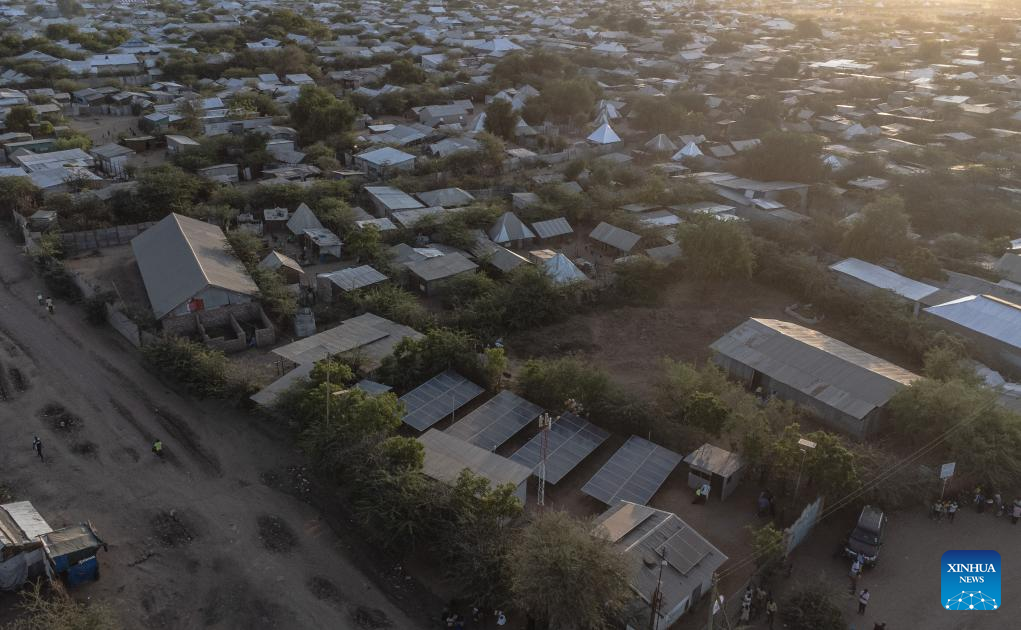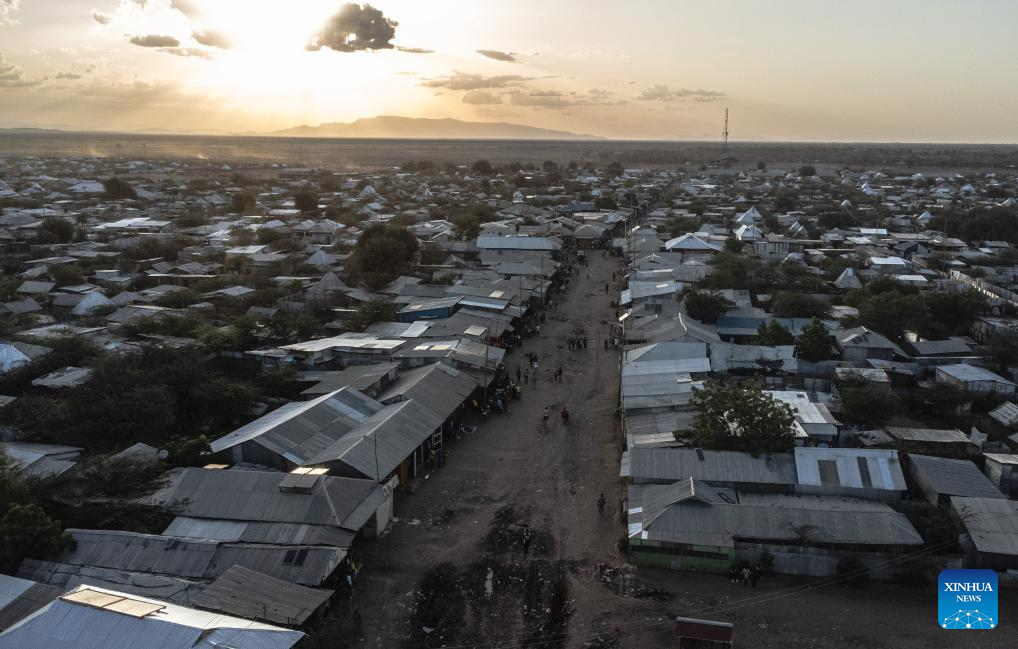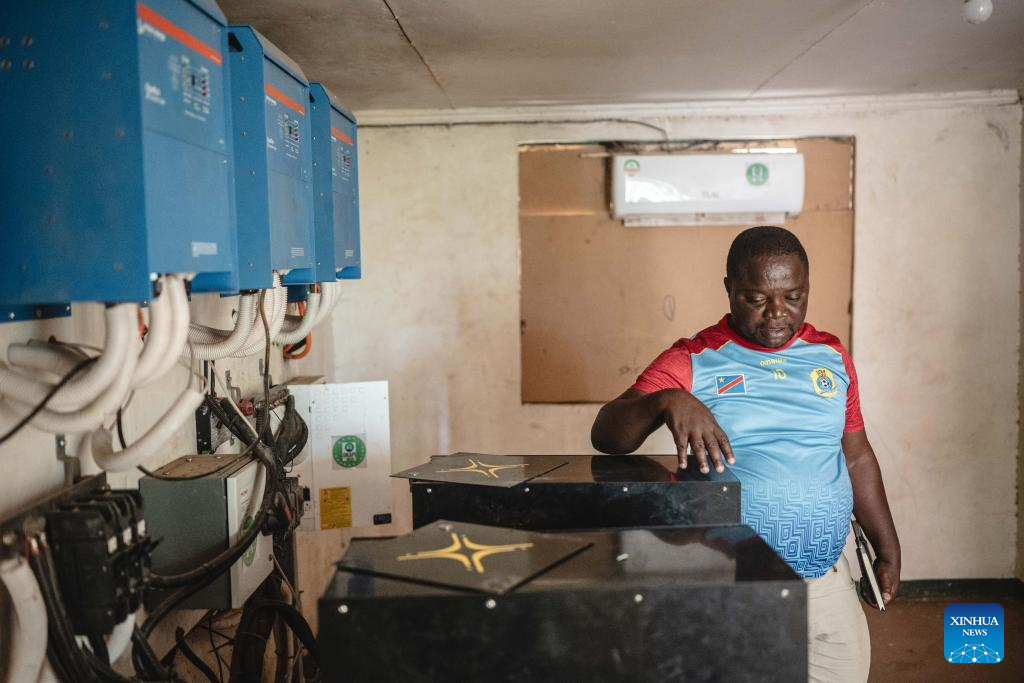
An aerial drone photo taken on June 19, 2024 shows solar panels in Kakuma refugee camp in Turkana, Kenya. (Xinhua/Wang Guansen)
TURKANA, Kenya, June 30 (Xinhua) -- In the sprawling Kakuma refugee camp that is located in northwestern Kenya, one section stands out because it is well-lit amid the tranquility of the looming dusk.
The residents of Kakuma Three refugee camp are beneficiaries of green energy that is readily available thanks to a mini-grid that has been made possible thanks to China's solar technology.
Vasco Hamisi, who fled the Democratic Republic of the Congo (DRC) in 2010 and ended up in the Kakuma refugee camp, is playing a pivotal role in ensuring that the refugee camp has access to renewable energy despite not being connected to the country's main electricity grid.
Hamisi, a father of two children, was inspired by the region's all year round abundant sunshine to explore the use of solar panels. Initially, he did not have the funding to actualize his dream of lighting up his refugee camp, which is home to about 288,000 refugees from nine countries including South Sudan, Ethiopia, Burundi and DRC.
His breakthrough came in 2018 when he participated in a grant challenge competition and emerged as one of the winners who qualified to be awarded funding for their green projects.
Hamisi received funding of about 275,000 U.S. dollars to finance development of a solar power plant, Okapi Green Energy, in the refugee camp.
"I began looking for a viable solution to supply electricity and discovered that China has developed affordable and reliable technology to convert sunshine into electricity," Hamisi told Xinhua during a recent interview in the Kakuma Refugee Camp.
After receiving all the necessary approvals from government agencies such as the Energy and Petroleum Regulatory Authority, National Environmental Management Authority as well as the county government of Turkana, he hit the ground running.
Through his Okapi Green Energy, Hamisi purchased solar panels and other related accessories from Chinese firm Jinko Solar to establish a 20-kilowatt power plant and began connecting the refugee camp with electricity in 2021.
"So far I have 150 households and 50 businesses as customers of my mini electricity grid at the Kakuma refugee camp," Hamisi said.
Due to the overwhelming success of the project, he is currently in talks with the Xiamen Hithium Energy Storage Technology Co., Ltd in east China's Fujian Province, which is a stationary battery manufacturer, to expand his electricity generating facility to achieve 2.4 megawatts in the next few months.
One of the beneficiaries of the green energy project is Desantos Theophile Byizigiro who runs a successful entertainment joint at the Kakuma refugee camp.
The Rwandese refugee escaped his homeland in 1997 and came to Kenya in search of greener pastures.
Byizigiro said that before he connected to the solar plant, he depended on a generator which was very costly and inconvenient to his patrons.
"The generator produced a lot of smoke and noise which interfered with the comfort of my clients," Byizigiro said.
He revealed that since he was connected to the solar electricity grid, his profit margins have expanded even as the cost of electricity reduced from 2,000 shillings (15.5 U.S. dollars) daily to 3.9 dollars. ■

An aerial drone photo taken on June 19, 2024 shows a view of Kakuma refugee camp in Turkana, Kenya. (Xinhua/Wang Guansen)

Vasco Hamisi checks the equipment for solar power in Kakuma refugee camp in Turkana, Kenya, June 19, 2024. (Xinhua/Wang Guansen)
